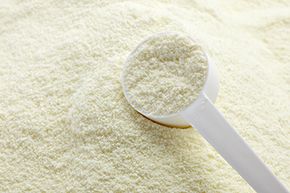Dehydrated Food at the Store
The ancient Egyptians who laid their food out to dry in the sun wouldn't recognize the way food is dehydrated commercially today. Huge facilities outfitted with shiny steel equipment churn out fruits, vegetables, meats, herbs, and dairy at a quality and efficiency that would have been unthinkable back then.
Like the stillhouses before them, the oldest mechanized dehydrators relied on good ol' hot, dry air to remove water from the surface of the food. This first generation of equipment — which includes bin, tray, conveyor, kiln and tunnel dryers — has three basic components in common:
Advertisement
- A feeder to bring the product in the dryer
- A heater to remove the moisture
- A collector to remove the wet air and particles produced through the drying process
While these types of dehydrators have been around for a while, they still work great for drying grains, sliced fruits and vegetables, even today.
The next big thing in dehydration was technology that could turn liquid and liquefied food into powders and flakes. One example of this method is spray drying, which is exactly what it sounds like: Fluid foods are forced through a nozzle, transformed into airborne droplets and then introduced to hot, dry air. Milk, egg, ice cream, cheese and fruit juice powder are created this way. Drum dryers create powders and flakes from fluid food particles that are too large for spray drying. They consist of rotating drums that are heated by steam from the inside. Liquefied foods are applied to the outside of the drums to create products like potato flakes, pre-cooked cereals and dried soup.
A third innovation is probably one you've heard of: freeze drying. Like the phrase suggests, this process consists of freezing the food and then drying it. But this isn't just any drying process. The moisture, which is actually ice, is removed from the food through a process called sublimation, meaning it goes from ice to water vapor without ever becoming water. Basically, the ice evaporates. This process, executed under a vacuum and at temperatures as low as -50 degrees Fahrenheit (-45 Celsius), helps food maintain its structure, making it taste, smell and feel much like fresh food when it's rehydrated [source: Mountain House]. Almost any food can be freeze dried, including that astronaut ice cream you get at the science museum gift shop [source: Vega-Mercado et al.].
